Chinese Institute of Archaeology
Source - http://www.kaogu.cn/en/detail.asp?ProductID=4012
Xing Kiln is famous for the manufacture of the White Porcelain in the ancient China. Since the last century 80s, Xing Kiln has been firstly found in Lincheng County, Xingtai City of Hebei Province. Consequently, it was found in Neiqiu County of Xingtai City. Till now, there have been more than thirty sites of such kiln found in four counties, i.e., Neiqiu, Lincheng, Xingtai, and Gaoyi, dating to the Sui, Tang, five dynasties, Song-jin, and Yuan periods. Since twenty years, there have been three-time excavations conducted on the Xing Kiln sites.
From the middle of May to November in 2012, Hebei Provincial Cultural Relics Research Institute conducted the fourth excavation on the Xing Kiln site at the south of Xiguan Village of Neiqiu County. A total of twelve squares, each 10×10 square meters, were excavated. There were eleven kilns, a hundred and forty-four pits, six trenches and thirty-five wells, twenty-two tombs and two hundred thousand sherds of porcelain and kiln equipment found there, dating from the North Dynasty to Tang dynasty. Of the artifacts, there have been two thousand complete or reparable ones, including a variety of forms, such as bricks, tiles, pottery, biscuit fire, tri-colored glazed pottery, porcelain, bronze, iron, bone, kiln equipment and so on.
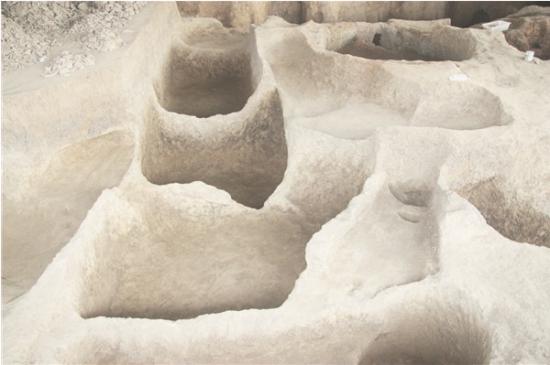
Eleven kilns excavated from the area could be divided into four groups: the first group, Kiln Y1-Y5, was distributed in the center of the excavation area. Except for Y4, others surrounded the same working pit, which was constructed in front of the kilns with longer side from the east to west and shorter one from the north to south. The pit, 3.5 meter deep, has stairs built at the northern wall. Of the five kilns with different size, Y2 was complete. The doorway of kiln was roughly built. Brick-built walls on each side of the doorway were remained, forming a narrow passage in front of the door. The second group included kiln Y6-Y8, located in the middle of the area to the north. All of the kilns may have used the same working pit, 2.95 meter from the base of the pit to the surface of ground. They have stairs at the eastern walls. The doorways of the kilns were well built. A narrow passage was built beside the kiln door, with the lower part built of brick and upper part built of earthen brick. The third group included kiln Y10 and Y11, situated in the northeastern of the excavation area, one in the north, and the other in the south. The pits differ in depth. Y11 was found in the north, facing the working pit to its south. The pit has round outline, with the depth 3.75 meter from the base of the pit to the ground surface. It has stairs at its south wall. Y10 was found to the south, with stairs to the west of the doorway. The working pit was situated to the north of Y11. The base of the pit was higher than Y11, which was connected through stairs with the working pit of Y10. The other kiln, Y9, was located in the southeastern of the excavation area, badly destroyed of all of the kilns. Based on the stratigraphic sequence and unearthed items, Y9 was abandoned during Tang dynasty, but others were abandoned in the Sui Period.
There have been one hundred and forty-four pits, including a variety of forms: round, rectangular, square and irregular. The walls and base of the earthen pits were built irregularly, differing in size. The length of the larger pit was more than eight meter, with small ones, only one meter long. They also differ in depth; the deeper pit measures more than three meter, but the shallow one measures only less than one meter. With the evidence of unearthed items, these pits were abandoned during the late North Dynasty and Tang Period.
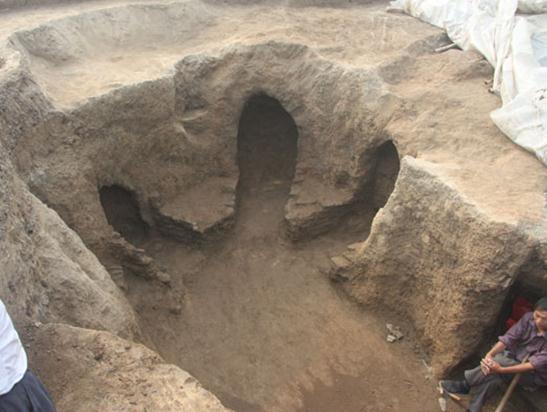
There have been six trenches, of which two were oriented from the east to west, four oriented from the north to south. The long, irregular, trenches were abandoned in different times.
Thirty-five wells, all rounded, were concentrated in the northern half part. The depth of some wells were less than five meter, while some ones more than 6.3 meter in depth. They abandoned differently in time, from the North Dynasty to the Ming-Qing Periods.
There have been twenty-two graves, most of which were catacombs, with a smaller quantity of tile-coffin and earthen pit tombs. The category of catacomb is characterized of the inhumations in the neighborhood area, with the vertical shafts tomb passage oriented to the south or southeast. The base of the tomb passage was sloping. The area of these catacombs was small with irregular outline. There has been often a coffin found in the cave grave. Several tombs have two coffins or two skeletons in a coffin. Secondary burials were often seen in the cemetery. Most of the graves contained common people with few grave goods, occasionally with small porcelains, bronze hairpins, bronze coins and so on. With the evidence of the stratigraphic sequence and grave goods, these graves may have been dated to the North dynasty, Tang, Jin and Ming-Qing Periods.
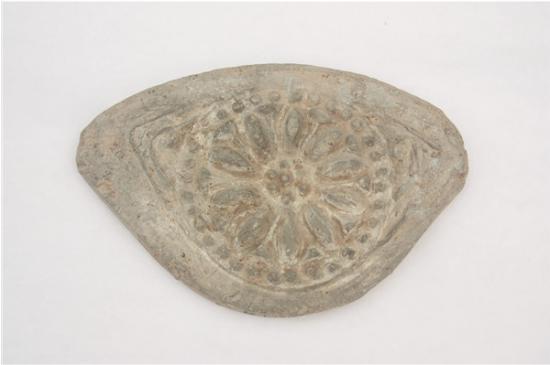
A variety of remains were retrieved from this excavation, mainly from working pits in front of the kilns, pits and trenches. Of all the items from the North Qi to early Sui Periods, most of them were the bowls, other forms include basin, plates with high stems, bottles, jars, pots and so on. Most of the glaze is blue-green or yellowish blue-green with a smaller quantity of the whitish blue-green glaze. The kiln equipment includes a large quantity of triangle supporting nails, trump-shaped kiln column and a small quantity of cylindrical kiln column. Other items include a great number of bricks, tiles, tile-end, pottery pot, and fragments of jars. There has been a small quantity of green and yellow-brown glaze porcelain sherd. An obvious change of porcelain from the late Sui period is that it is easy to distinguish the blue-green, yellow and white porcelains. The change from the late Sui period also includes the appearance of black porcelain, widely use of cosmetic earth, and ample ceramic forms. With the aspect of ceramic forms, they may have changed a lot: bowls became tall and straight companying with much more bricks, ceramic tiles, tile-end, moulds of tile-end, ceramic pots and jars. There also found sherds of tri-colored glazed ceramics. The remains from Tang dynasty become richer; especially, the number of the white and fine white porcelain obviously increased. Large body of ceramics may have often seen. The tri-colored glazed ceramics from the Tang dynasty were often found. The ceramic forms include bowl, bottle, plate, cup, jar, flask, pot, basin, incense burner, figure, porcelain figure and mould. Other kiln equipment includes various saggers, kiln columns and supporting nails. Together with the kiln equipment were some bricks and tiles, pottery basins, pots, urns, jars, tile-end and grey ceramic plates, incense burner, ink stones and polished black pottery plates.
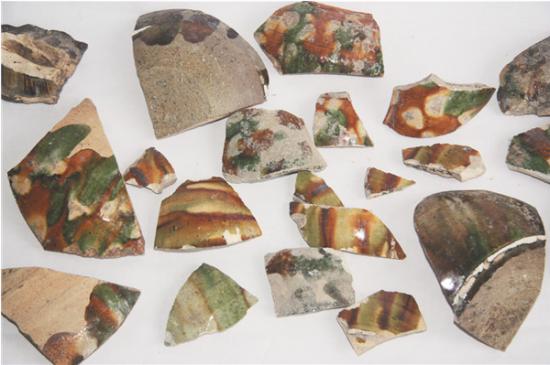 Firstly, the most important result of the excavations this time is the date of kiln furnaces, which may have been the groups of the earliest ones of Xing Kiln that has ever been found till now, which has provided the rare material for research on early kiln furnace and its products of Xing Kilns. Secondly, the excavations of the clusters of pits and their findings provide the early remains of Xing Kilns. Especially, there have been over twenty pits together with ample findings contemporary with the North Period. All of the facts mentioned above provide important evidence for a clue of the earliest date of the Xing Kiln.
Firstly, the most important result of the excavations this time is the date of kiln furnaces, which may have been the groups of the earliest ones of Xing Kiln that has ever been found till now, which has provided the rare material for research on early kiln furnace and its products of Xing Kilns. Secondly, the excavations of the clusters of pits and their findings provide the early remains of Xing Kilns. Especially, there have been over twenty pits together with ample findings contemporary with the North Period. All of the facts mentioned above provide important evidence for a clue of the earliest date of the Xing Kiln.
Other results include the first discovery of the tri-colored glazed pottery of Xing Kilns dating to the Sui Period.
Another result of this excavation is the discovery of ceramic sherds incised characters, i.e., ‘高’,‘上’, ‘大’.
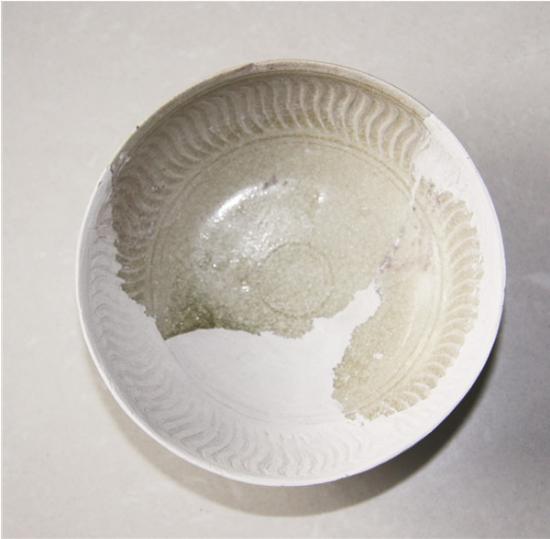
It is also noticeable that many deposits of iron slags were recovered from the abandoned pits of the Sui Period, indicating the existence of iron industry of the Sui Period within the Neiqiu City. Plenty of biscuit fire sherds excavated from a pit of the Tang dynasty provided the essential clue for the search for the tri-colored glazed ceramic kiln. Recovered from wells of the Tang dynasty, the appearance of multilayer dense-eaves stone towers especially used for burial has provided helpful material to confirm the date of porcelain from Xing Kiln. (Translator: Sang Li)